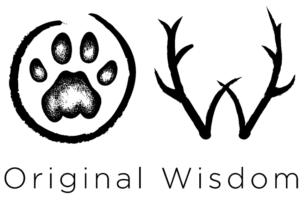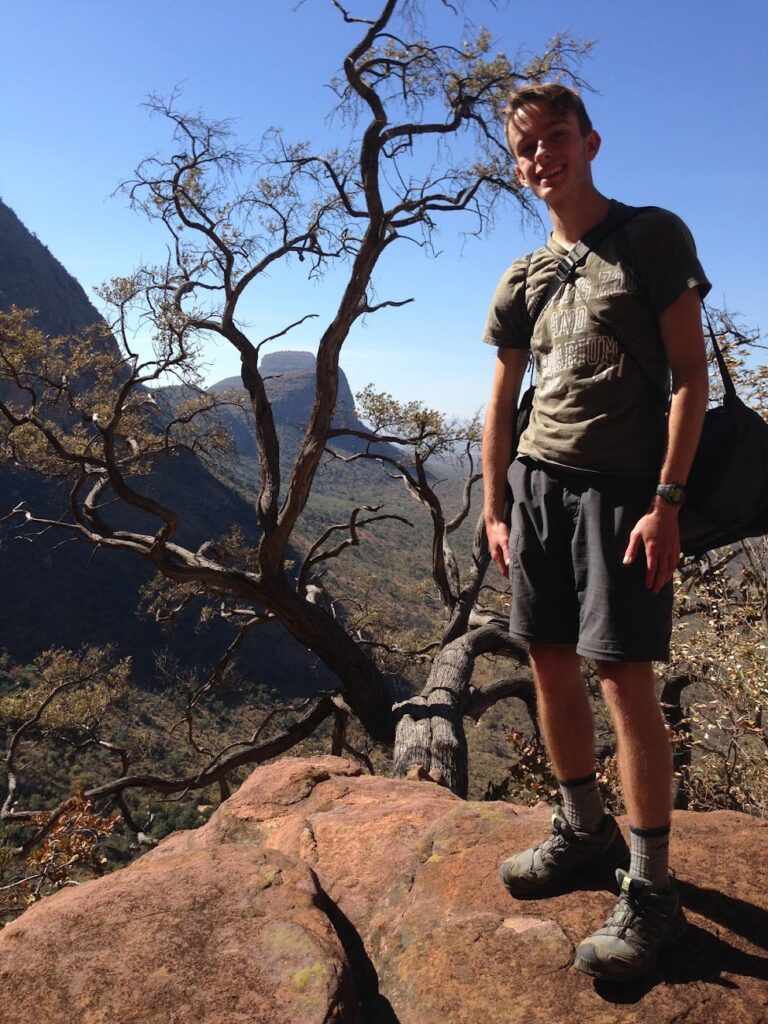When it comes to tracking, the most important thing to learn well, and the largest field to study (it’s endless, really) is track and sign aging. If you can tell that a trail is fresh, you’ll have more success following it and finding the animal. As a general rule, fresher tracks stand out more than older ones, so they are easier to see. You can often see them into the distance, which helps you to keep your head up. Keeping your head up allows you the opportunity to see the animal before it sees you, and keeps you safer from surprises like a dangerous animal sleeping under a bush. It also makes it easier to read the story of the trail because you aren’t just looking at footprints down by your feet – you’re looking at where the animal wandered left to browse on its favorite tree species, or beelined for a particular site to do some territorial marking with urine, feces, and other scent glands. I find the behavioral interpretation aspect of tracking to be the most intriguing part of it all, except perhaps for being able to watch the animals without them knowing you are there, like the time that Senior Tracker Lee Gutteridge, natureguidetraining, and I watched a sleeping cow rhino with her calf playing around her feet. (I told this story in Ron Waline’s Wilderness and Wellness podcast, if you want to hear more.)
But, to be able to do that, you need to get good at knowing how old tracks are, and how old browse is, and how old dung is, etc., etc., etc. How do you do that? You start by looking, repeatedly. I hope you are starting to recognize that tracking is all about developing good routines. They don’t have to take a lot of time, but they have to be routine.
Let me make an important digression and tell a quick story: Back in 2006 I went to a workshop in the Redwoods of California. It was a meeting of the International Society of Professional Trackers (ISPT) and tracker Kim Cabrera, Animals Don’t Cover Their Tracks, was hosting it at the Boy Scout camp where she lives as a caretaker. Mark Elbroch wasn’t yet Dr. Elbroch or a Master Tracker like he is now, but he had just earned his Senior Tracker certification in South Africa after years of traveling back and forth from the USA and working at it. In gratitude, he obtained funding to bring ten South Africa trackers from the CyberTracker system to the USA, including CyberTracker’s founder, Louis Liebenberg, and several excellent Shangaan trackers who had never before been outside their local village or the reserve they worked on as trackers.
In Africa, “tracker” is an occupation and people get paid to follow tracks and signs of animals like leopards, rhinos, and lions to find the animals and show them to tourists. Needless to say (or maybe it needs to be said, again), it’s possible to get really good at something you do every day.
Kim had spent the previous week setting up a little “test” for everyone in attendance. She’d walked around the camp every day at a different time and put one of her tracks in a different specific place. So, we had four or so tracks, of varying ages, and we were asked to walk around the camp and put them in order from oldest to newest. After about a half an hour of scrutiny, we all gathered back at the dining hall to discuss our conclusions. There was a lot of debate. The big picture, take-away message for me was this:
The US trackers were trying to narrowly define each track, “Number one looked to be 36.3 hours old because of this and that.” And, “Number four looked about two hours old because of this and that.” It was great. Many of these trackers were human trackers who needed to know exactly how old a track was and to connect every track to provide evidence in court cases or find missing persons. Then, the Shangaan trackers said, “Well, that one is too old to follow, and that one is too old to follow, and that one we could follow but it would be difficult, but that one we could follow and find the person.” Listening to those Shangaan trackers was a major “aha!” moment for me as a new tracker at the time. You mean, I didn’t NEED to know EXACTLY how old a track was to be able to follow it?!? You mean, I only needed to find a trail fresh enough to follow?!? You mean, some trails are just too old to struggle with?!?
Now this might seem obvious to you, but it wasn’t to me at the time. Previously in the USA, wildlife tracking had been wrapped in a cloak of mystery where you needed an indigenous or spiritual connection to do it. I’d struggled with finding teachers that could tell me concrete information or give me a process that I could work to improve my skills. (Please note, I’m not trying to insult any person or school-of-thought, here, those methods just didn’t work for me.) I worked a construction job for a summer once during my undergraduate degree, framing houses, and my mentor for that used say in his Louisiana drawl, “we ain’t building a piano.” Meaning – get it done, done right, but done. Framing a house requires a lot less meticulous measuring and fitting than building a piano.
The sheer practicality and transparency of those South African trackers in the USA helped me to understand that anyone can learn tracking, it just takes time and practice (and a good mentor helps).
It was then and there that I vowed to go to Africa and learn from these people, in the CyberTracker system. And now I’m a Senior Tracker and Evaluator on that system with a foot firmly on both continents. The proof is, as they say, in the pudding.
In our online course, An Introduction to Tracking at TrackerMentoring there are two exercises based on looking at tracks and signs with the idea of beginning to figure out how to tell how old a track or a broken branch is – so you know when the animal walked by, and if it fed how old that feeding sign is, or how long it takes dung beetles to show up – everything you learn refines your timing. One exercise is called Track Aging Areas, and the other is called Comparing the Ages of Bruised and Broken Vegetation. There’s also an exercise on starting a scat collection (physically or photographically) but we aren’t going to get into that today.
Track aging is built on repetition. So, these exercises encourage repetition. I don’t recommend building a big fancy tracking box and filling it with the finest sand and spending hours every day hunched over it examining how and when each grain of sand falls. I’m sure there is value in that, but I don’t have time for it. A track aging area is actually a really simple thing. Some tracking instructors over complicate this process, in our opinion. Keep it simple (the Keep It Simple Silly concept😊). If it’s simple, then you will do it.
The Exercises:
Track Aging Areas – Clear a small patch of excellent substrate, or if you don’t have it naturally around your home, get some sand. You can put together a rectangular box, about 2 meters long, and about one meter wide, with some fallen logs or rocks. It doesn’t need to be constructed with lumber and nails. The box isn’t even necessary, but it does help to prevent other people from walking through it and destroying your evidence. Then, you just walk through the area or box every day at around the same time. Every day you put in a new trail in the morning, leaving your fresh shoe prints next to yesterday’s older ones, which is next to the day before, and so on. As you put in each day’s new set of tracks, take note of how the previous tracks have aged. You don’t need to spend a lot of time on it. Literally, a few minutes a day will put images in your head about how tracks age, and what a fresh track looks like. If you have longer, spend more time and take notes on how the weather and time affects the tracks.
Comparing the Ages of Bruised and Broken Vegetation – Find some low growing plants in your preferred tracking area, which seem to bruise if stepped on. Try to identify them if you can, if not just sketch the leaf shape and give yourself a general description to be able to identify it again. Then, you will need to undertake a small experiment. You simulate an animal browsing or stepping onto the leaf (you might need to push hard to simulate a 55kg antelope on the hoof!) Then, with your note book, observe the immediate change. Does it bruise straight away. Does it leak fluids. Does it discolor, become darker or brighter? Does it show no changes?
Then, whenever you walk by, check it again. And then again. Leave a notebook open nearby, and if you see changes, note what they are and how long it takes to get to that phase. Checking the same leaf later that day, and then again in the morning, and again the next day, and the next… This will add to your overall knowledge over time. The more you do this, with different species, and even with twigs and branches (both dead and alive) the more useful it will become. If nothing appears to happen to your experimental vegetation, don’t think of that as ruining your exercise, because that is good information to have, just keep going so that you notice when bruising does begin to happen, and why. Perhaps with some species it’s too cold outside for bruising, or the leaves are too leathery.
The corresponding weather is also very important to both track and sign aging. Direct, hot sun might cause different effects from overcast weather, or being in the shade of a tree. After experimenting in slightly different circumstances of weather, temperature and wind, you may develop and interesting picture of what to expect, and be able to use these techniques as a baseline to assist you with extremely accurate aging of a trail.
Track and sign aging is an enormous field to study, it can seem overwhelming at first, but once you start, it’s endlessly fascinating. It’s also imperative to your tracking foundation – all the other tips and tricks won’t work if you can’t identify a fresh trail.
If you like this, please share it, and tag us at #trackingisoriginalwisdom, #trackermentoring, #natureguidetraining, #cybertracker , and #trackercertification
<strong>Download Original Wisdom’s recommended reading list for trackers by signing up for our newsletter!</strong>
<strong>Once the sign-up form has been submitted, you will be re-directed to the download page.</strong>
Our recommended reading list is specific to Southern Africa and North America, but, a good tracking book is helpful in any region as a starting point to learn how to look at track morphology and animal behavior.
[contact-form-7 id=”2892″ title=”Subscribe to the newsletter”]
<h1><strong>Interested in online and correspondence tracking courses? Visit us at </strong><a href=”https://trackermentoring.com/”><strong>TrackerMentoring.com</strong></a><strong>!</strong></h1>

